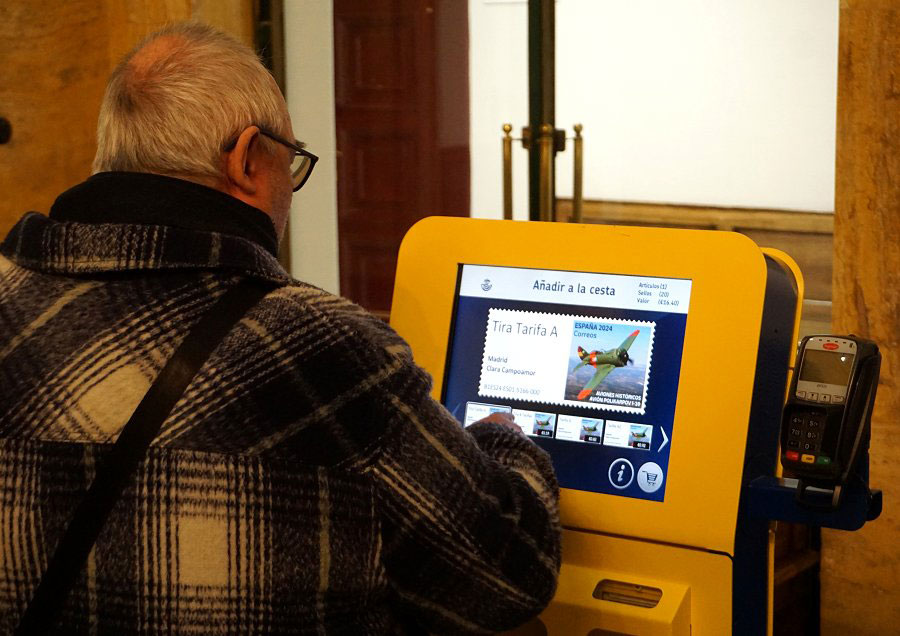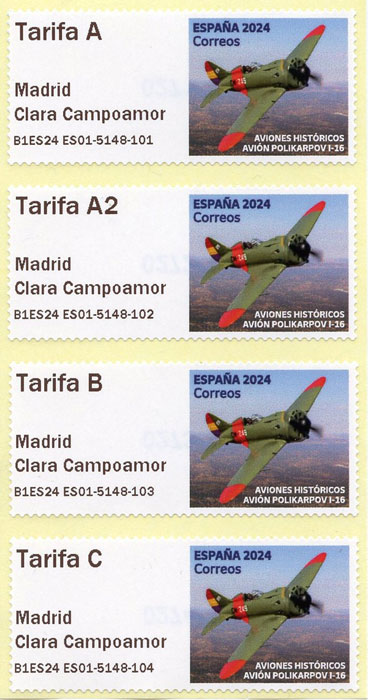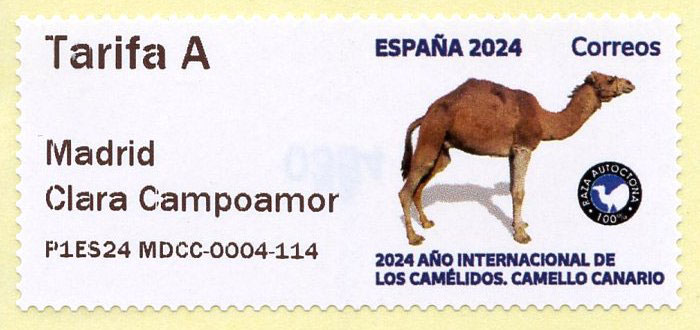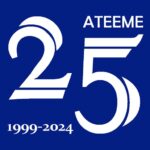The Correos philatelic service begins 2024 with the release of two ‘definitive’ issues of variable value stamps. Unlike other designs issued during the year, these two issues will be available from the IAR philatelic kiosk (code ES01 printed on the stamps) throughout the year, except when this machine is moved or used at special events.
The first two issues depict a Canary Islands camel, in commemoration of the International Year of Camelids, and a Polikarpov I-16 aircraft. The philatelic service had planned to dedicate one of these issues to the Postcrossing project, although this was not possible owing to disagreements with the project promoters.




The United Nations declared 2024 the International Year of Camelids. This celebration highlights the fact that camelids are an important livelihood resource for millions of families in over 90 countries. The issue is illustrated with a photograph of the Canary camel. However, it is not strictly a camel, but an indigenous breed of dromedary camel from the Canary Islands, historically used for agricultural work and today as a tourist attraction. The design also includes the logo created by the Asociación de Criadores de Camello Canario.
The second design is the first of an interesting collaborative project between the philatelic service and the Fundación Infante de Orleans (FIO), a museum of airworthy historic aircraft founded in 1984. This first issue – of what promises to be a long series – is dedicated to the Polikarpov I-16, a Soviet-made fighter designed by Nikolai Polikarpov in 1933. This aircraft was part of the Republican Air Force and took part in the Spanish Civil War and called ‘mosca’ (fly) by the Republicans or ‘rata’ (rat) by the rebels (Nationalists) (More information).
The rolls of 1,500 thermal self-adhesive labels were manufactured by Cartor Security Printers Ltd. in the UK. The size of the label is 56 x 25 mm., with perforations around the edges. The labels come affixed on a yellow silicone coated release liner and are digitally printed with a gloss varnish finish with the area to the left in white for the printing of the stamp’s data.
All the labels are numbered on the back of the release liner for inventory control. Unlike previous issues, and possibly due to a manufacturing error, the numbering sequence is reversed relative to the design. Consequently the back of each label shows the number of stamps issued by the machine and not the number of labels remaining in the roll. The printing of these numbers also produces a faint dashed line across the backing paper.

Both designs were available from January 22nd 2024 from the ES01 philatelic kiosk temporarily installed in the main hall of the Clara Campoamor building; the Correos corporate headquarters in Madrid. For the release of these definitives, the philatelic service set up a small temporary office next to the machine, where visitors were able to buy the commemorative covers and obtain the special first day postmarks. As in previous years, the philatelic service did not produce postcards for these definitive issues.




Both designs of this issue available from the philatelic kiosk at this location include the permanent ‘Madrid Clara Campoamor‘ imprint in two lines under the face value indicator.
Below, the sets or ‘Tiras de 4 Tarifas’ with the four values programmed in the kiosk with the corresponding receipts.







Individual orders to the philatelic service and the stamps contained in the annual presentation packs, are printed from the philatelic service back-office computer system, with the same wording but with the general MDCC code.
Besides the different code, the two machines, operating with different software and fitted with different direct thermal printers, produce a similar but not identical printing.
ES01 philatelic kiosk
Computer system – Code MDCC






First day covers with the two ATM variants, and the special & ‘ATM Punto Filatélico – Madrid Clara Campoamor’ first day date postmarks
(English edition rewritten by J. Gareze – February 2024)


